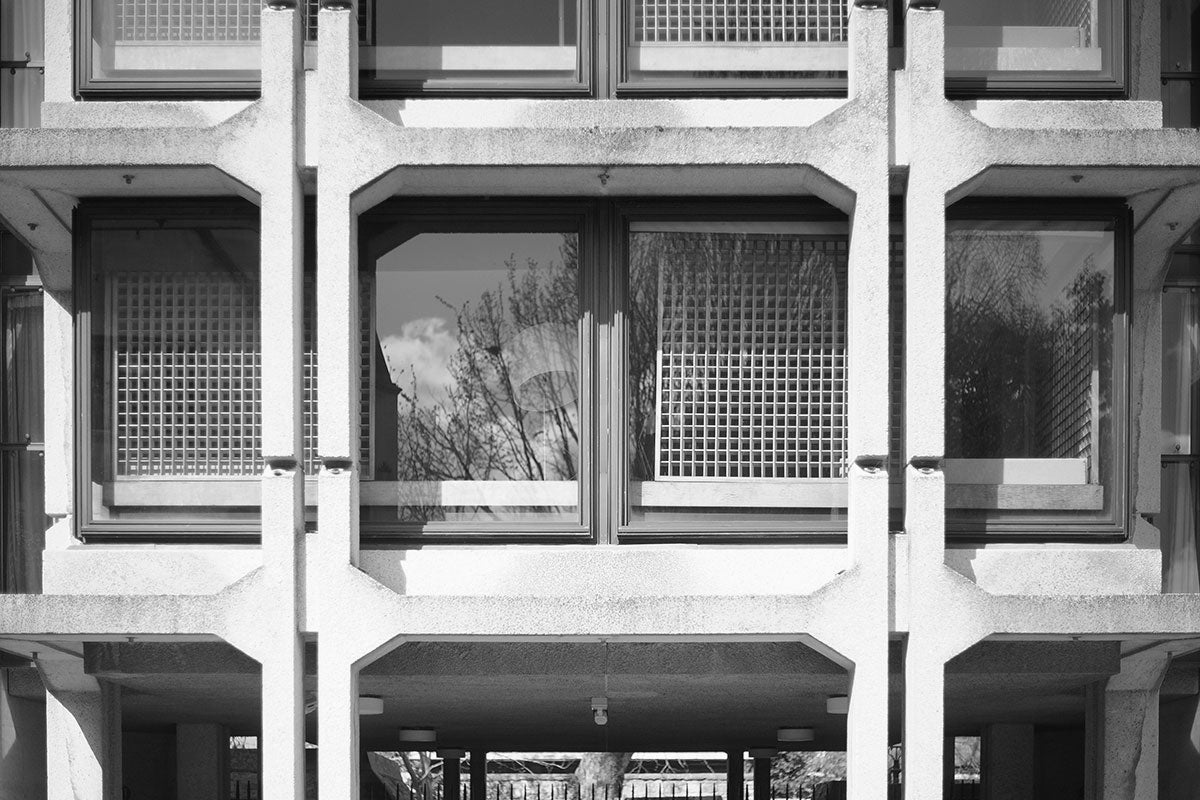1960s University Buildings: The Golden Age of British Modern Architecture
Ahead of the publication of his book, 1960s University Buildings on 18th June, author and architect John Barr reflects on how and why this particular kind of architecture captures the social spirit and ambitions of a generation, and considers what we might learn from it...
• • • • •

[Sir Thomas White Building, St John's College, Oxford: Arup Associates]
As someone who studied architecture at a British university in the early 1970s, I am a product of both the architectural and educational ideas of the 1960s, a period of optimism and change when anything seemed possible. In our History of Architecture lectures we learnt about Walter Gropius, Ludwig Mies van der Rohe, Le Corbusier and Frank Lloyd Wright, all giants of modern architecture and all immensely influential. But they seemed to us distant and historical figures. The work that really excited us was much more tangible: the projects that were being built by a new generation of British post-war architects that appeared in the magazines we read, and which we could visit with relative ease. There were new and interesting ideas in the design of housing, schools and factories, but nothing – nothing – grabbed our attention like the university buildings, which seemed to represent the cutting edge of the new thinking. The motivation for this book was part celebration of those buildings and part opportunity to revisit them, but mostly it was an attempt to understand how they had come about and what they might still teach us.
I photographed the buildings on three road trips. The first took in Leicester, Warwick, Birmingham, Oxford and Reading; the second York, Leeds, Cambridge, East Anglia, Essex and Sussex; the third London, Loughborough, Lancaster and Durham. Pre-planning took much longer than the actual site visits, as access had to be negotiated with each department or college in advance. Once the purpose was explained to them, the university personnel that I approached were extremely helpful and accommodating. Nonetheless, the need to request access, in itself, illustrated how society had changed since these buildings were built.

[Churchill College, Cambridge: Sheppard Robson]

[Cripps Building, St John's College, Cambridge: Powell and Moya]
Take Cambridge as an example: when I lived there in the 1970s my walk to work took me from my modern council maisonette, through a choice of colleges, to the Market Square, where I worked in the City Architect’s Department helping design good quality social housing for the inner city. None of that would be possible now. The City Architect’s Department was disbanded under the Conservative government of Margaret Thatcher, council housing was sold off under right to buy legislation and there is no longer affordable housing anywhere near the city centre, or perhaps anywhere in Cambridge. Meanwhile access to college grounds is highly restricted and may involve an entry fee when allowed. No doubt this is partly due to security concerns, an increase in visitor footfall and a pervasive ‘selfie’ culture, but it also marks a profound change in the perception of universities: from public assets to commercial enterprises; from enablers of the ‘good society’ promoted by the 1963 Robbins Report to enablers of personal profit for those who can afford to attend.

[Keble College, Oxford: Ahrends, Burton and Koralek]
Study of the university architecture of the 1960s reveals how society has changed, how the perceived purpose of universities has changed, and also how the way we design has changed. Many of the buildings featured in the book are significant works of architecture, multi-layered and intricate, and all achieved without the aid of computers. Is there a link between these factors? Is the level of thought and intention that was applied a result of the time-consuming, labour-intensive process of hand-drawn design? And does the opposite apply to today’s computer-driven designs?
Two buildings face each other across a courtyard in St. Antony’s College, Oxford. The Hilda Besse Building was designed by Howell Killick Partridge and Amis (HKPA) in 1960 and has multiple layers of meaning and intention built into its use of structure, space and fine detailing. The Investcorp Building designed by Zaha Hadid Architects and opened in 2015 seems like an image-driven one-liner by comparison.

[Hilda Besse Building, St Antony's College, Oxford: Howell, Killick, Partridge and Amis]

[Investcorp Building, St Antony's College, Oxford: Zaha Hadid Architects]
I am sure the differences are in some degree related to differences in working practices (hand-drawn vs computer) but also to the cultural changes that have occurred in the period between the two. This is not a Luddite condemnation of technology. A computer is simply a tool, the internet simply a resource, and both offer many advantages, but we must decide how to use them wisely. The danger lies in allowing the benefits they can offer to drive out a thoughtful approach to design. Technology is not the issue; our attitudes to design and the purpose of architecture are the issue.
Assurance is offered that as time goes by the world will become more united, by shortening distance and transmitting thoughts through the air. But in construing freedom as the multiplication and speedy satisfaction of needs they [we] engender within themselves [ourselves] many senseless and stupid desires, habits and inventions. (Fyodor Dostoevsky, The Brothers Karamazov, 1880, translation by David McDuff, 1993)
Dostoevsky’s vision has become our reality, certainly in the worlds of social media and popular culture. What about architecture? In the aftermath of the First World War there was a call for a new society and a new architecture to serve it.
We have to begin again and look on architecture as an art of service from the communal point of view. (William Lethaby on ‘Style vs Utility’, 1922)
Following the Second World War, a new generation of architects felt that we had moved away from those principles and they sought a reset. More than anything, study of the university buildings of the 1960s allows us to measure how much our values as a society have changed since then and what we have lost or allowed to fall by the wayside. Is it time for another reset?
– John Barr, 2025
1960s University Buildings: The Golden Age of British Modern Architecture will be published on 18th June. Order your copy now:


